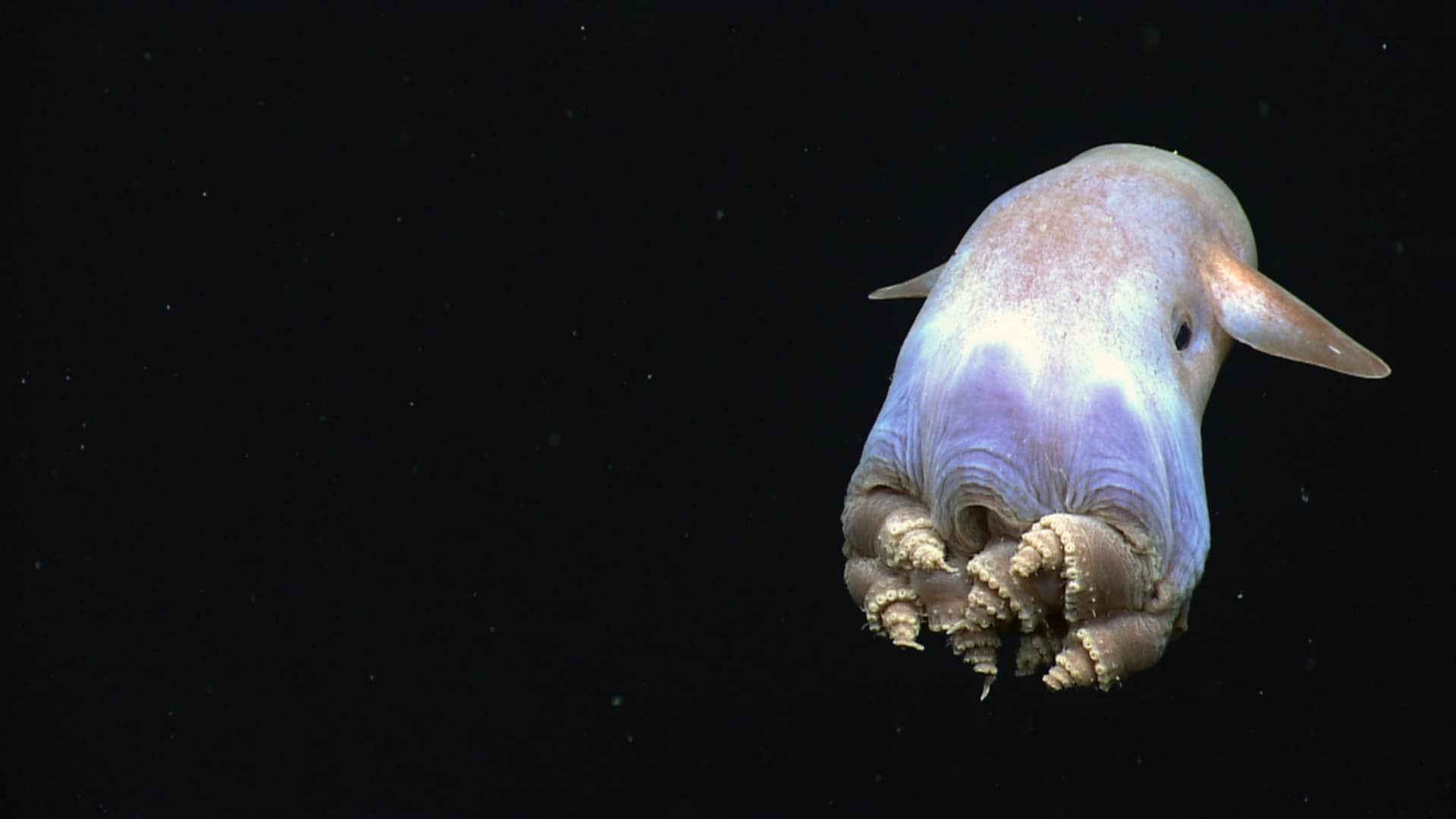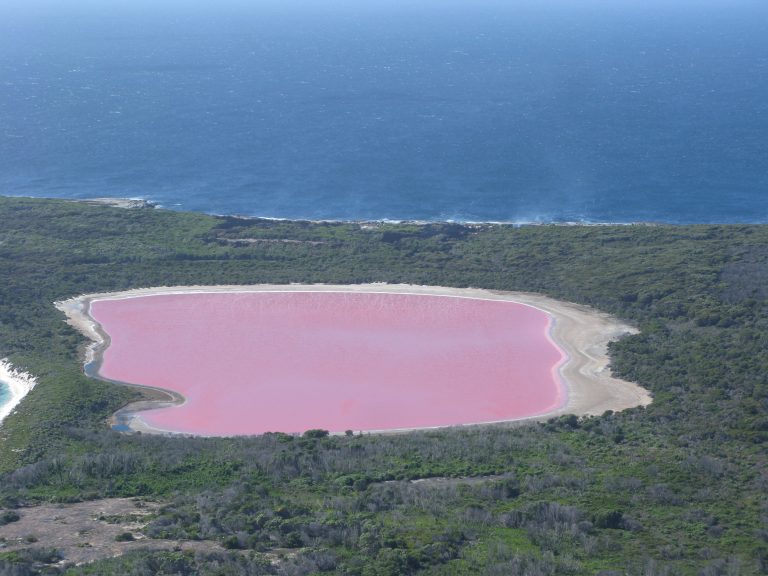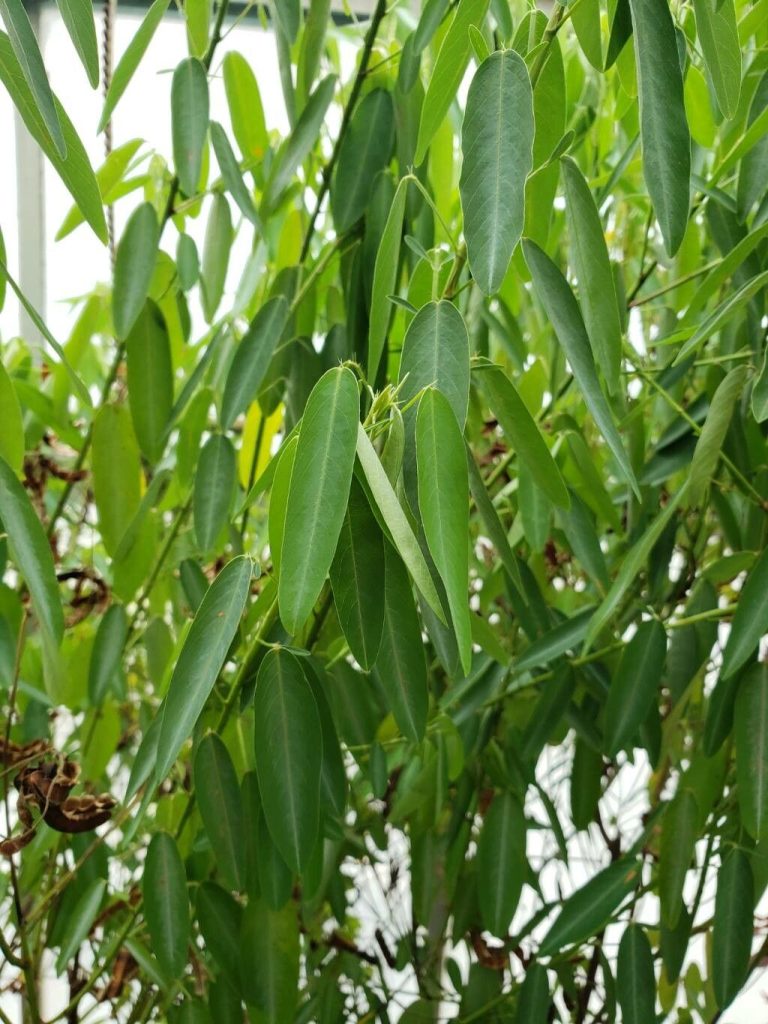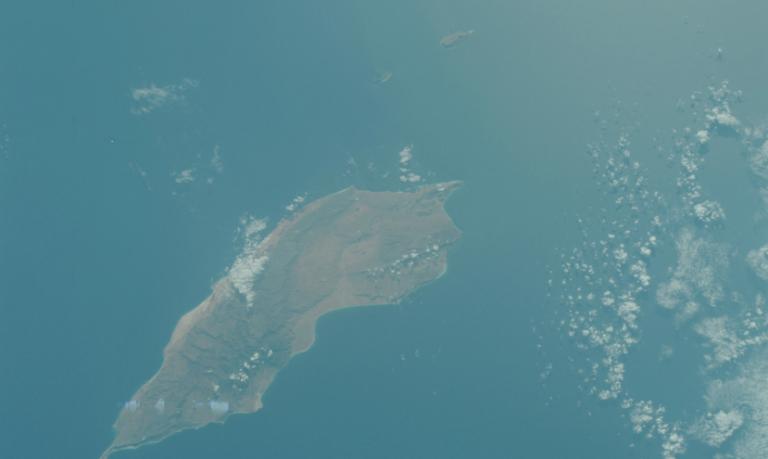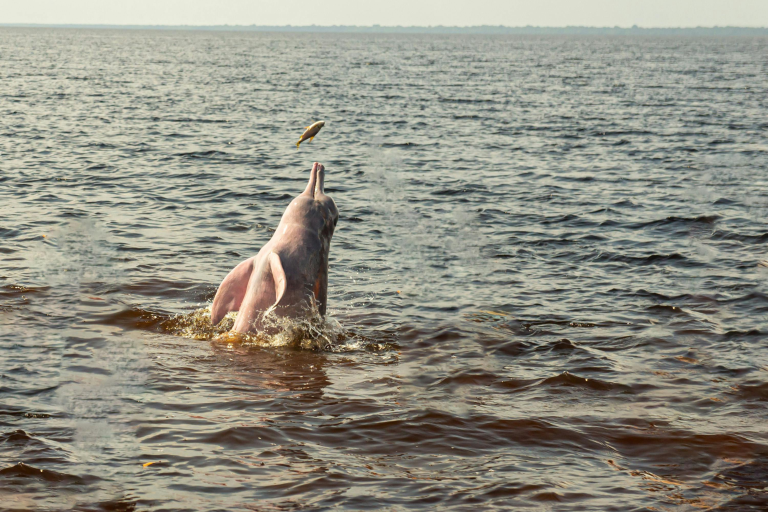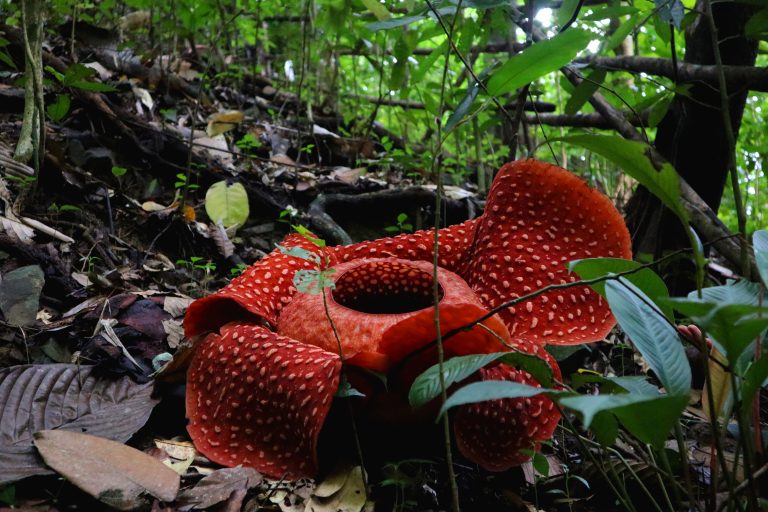Interesting Facts About The Dumbo Octopus: the Ocean’s Cutest Cephalopod
I think you will agree with me if I say that the ocean is where Earth’s weirdest, most fascinating, and most beautiful creatures dwell.
The Dumbo octopus, named after the famous Disney character due to the resemblance in appearance, is such a strange and cute animal.
In this post, we will learn about the Dumbo octopus, its special characteristics, its habitat, and the mysteries that still surround this adorable cephalopod.
What is a Dumbo Octopus?
The Dumbo octopus is not a single species.
All species of the genus Grimpoteuthis are called this name.
These Grimpoteuthis octopuses belong to the family Opisthoteuthidae, also known as umbrella octopuses due to the webbing they have between their tentacles.
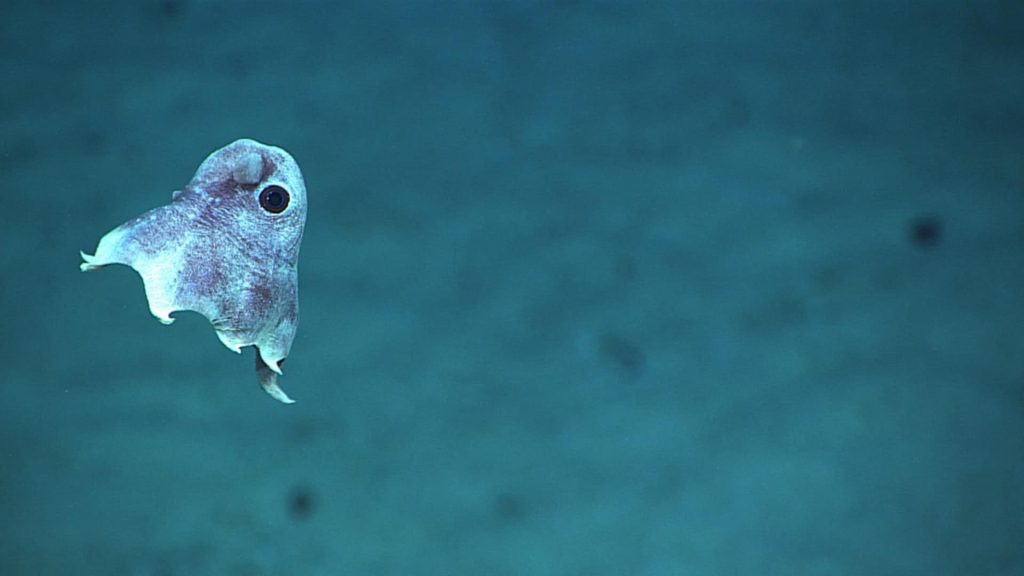
They have a pair of fins that look like big ears on the top of their bodies.
This notable structure helps them swim.
Seventeen species have been recognized in the Grimpoteuthis genus so far, and they each have their unique traits.
Their color is usually pale and they can be somewhat transparent.
Their bodies are round and their tentacles are short.
They have soft bodies that help them survive in the high-pressure conditions of the deep sea.
Where Does the Dumbo Octopus Live?
We already know that the Dumbo octopus is a marine animal, but in which parts of the ocean do they live?
Habitat and Distribution
Dumbo octopuses live in very deep parts of the ocean, often dark and cold with hardly any sunlight penetration.
They are found in the deep ocean all over the world, including areas near Oregon, California, Australia, New Zealand, the Philippines, Papua New Guinea, and the Gulf of Mexico.
They typically inhabit abyssal plains and continental slopes with the cold temperatures and high pressures, and low visibility.
Living in such hard-to-reach places, they pique the curiosity of the scientists who study marine biodiversity.
Depth Range
Dumbo octopuses can be found at depths from 1,000 to 7,000 meters (3,300 to 23,000 feet) below the surface.
The deepest a Dumbo octopus was sighted at was 6,957 meters (22,825 feet) in the Java Trench.
To survive the extreme conditions in these extreme depths, Dumbo octopuses have special adaptations.
They have soft bodies that can handle the high pressures of extreme depths they dwell in.
They also have blue blood, containing hemocyanin instead of hemoglobin that helps transport oxygen more efficiently in cold waters with low oxygen levels.
How Big is a Dumbo Octopus?
So how about the size of these deep sea dwellers?
Average Size
Dumbo octopuses are relatively small.
On average, adults measure from 20 to 30 centimeters (8 to 12 inches) long, the size of a small house cat.
This small size helps them conserve energy in their deep-sea habitat where food is scarce.
Size Variations
While most Dumbo octopuses are within this average size range, some grow larger.
The biggest Dumbo octopus recorded was about 1.8 meters (5 feet 10 inches) long and weighed around 5.9 kilograms (13 pounds).
So, there is some size diversity among them.
But they are generally smaller compared to other octopus species like the Giant Pacific Octopus which can grow up to 4.3 meters (14 feet) and weigh as much as 71 kilograms (157 pounds).
What Does the Dumbo Octopus Eat?
Let’s look into what Dumbo octopus’s diet is like.
Diet and Feeding Habits
Even though food is limited in their environment, Dumbo octopuses are skilled hunters.
Their diet mainly consists of small creatures found on or close to the ocean floor, such as crustaceans like copepods, isopods, and amphipods, and annelids like bristle worms.
They don’t actively hunt like other octopus species.
Instead, they drift along the ocean floor and capture those small creatures as they find them.
Unique Feeding Adaptations
Dumbo octopuses have special structures called cirri.
They use them to direct food toward their mouths by creating water currents.
They don’t tear their prey apart like many other octopuses but swallow them whole, because their prey is small and to save energy.
They also do not possess ink sacs like many other cephalopods as releasing ink wouldn’t help them in their dark environment.
They don’t have many predators in the extreme depths of the ocean they dwell in any way.
Interesting Facts About the Dumbo Octopus
Let’s look into some other interesting facts about the Dumbo octopus now.
Physiological Adaptations
Like all octopuses, Dumbo octopuses have three hearts.
Two of them pump blood through their gills while the other pumps it throughout their bodies.
Their blue blood contains hemocyanin, which can transport oxygen better than hemoglobin (the protein found in red blood).
This is useful for living in waters with low oxygen levels.
Dumbo octopuses also have large eyes that help them see in the low light conditions of the extreme depths they live in.
Reproduction and Life Cycle
Dumbo octopuses have a unique adaptation to procreate in their deep-sea habitats.
Female Dumbo octopuses can store sperm for long periods so they can fertilize their eggs when conditions are optimum.
Females carry eggs that are at different stages of development.
When they are ready to lay eggs, they attach them to hard surfaces like rocks.
When the eggs hatch, the hatchlings that emerge are fully formed, and capable of surviving on their own.
This is a useful trait in their harsh environment where parental care is hardly possible.
Movement and Behavior
Their ear-like fins act like stabilizers to help Dumbo octopuses swim smoothly.
They flap these fins to move around instead of using jet propulsion as many other octopus species do.
Having no ink sacs for defense, they quickly hide or retreat when threatened.
Recent Discoveries
Research about Dumbo octopuses is continuously growing.
Scientists identified a new species called Grimpoteuthis imperator or “Emperor Dumbo” near the Aleutian Islands of Alaska in 2016.
Technological advancements like remotely operated vehicles (ROVs) are helping researchers study these creatures better in their elusive habitats.
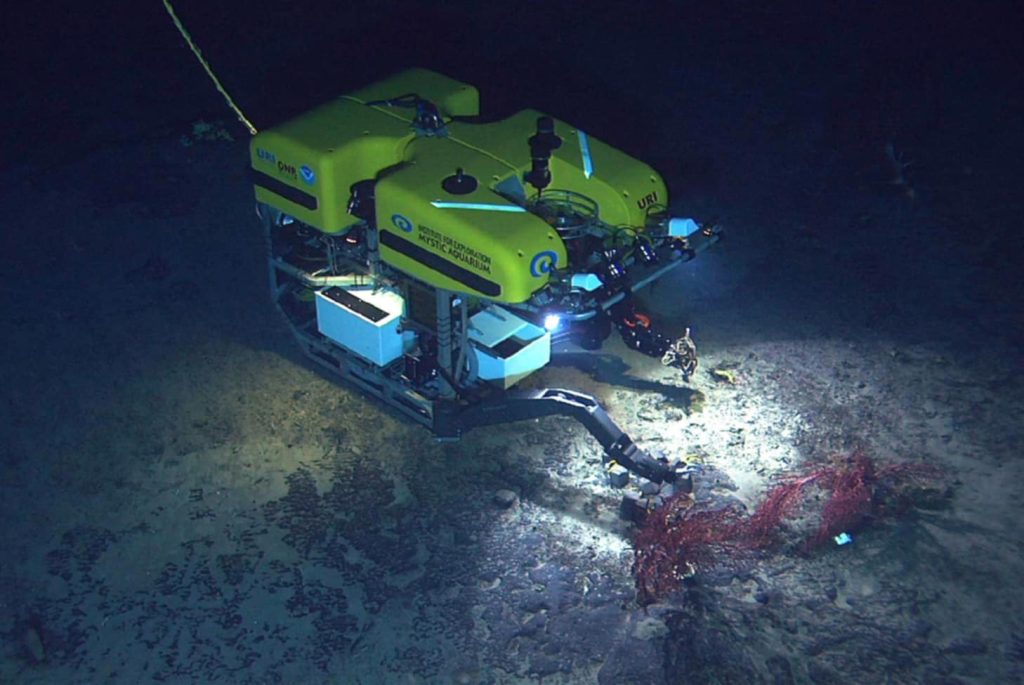
Conservation Status and Human Impact
The Dumbo octopus is currently listed as “Least Concern” by the IUCN Red List, showing that it is not facing immediate threats.
This is mainly due to its deep-sea habitat, far away from human activities and without many predators.
However, there’s a lack of specific population data, making proper conservation assessments challenging.
Deep-sea mining and pollution which could impact their environment over time can be considered potential threats to them.
All in all, while they are not currently endangered, continuous research is required to monitor their population status and habitat conditions.
Conclusion
The Dumbo octopus is a fascinating cephalopod with unique adaptations to deep-sea life, including ear-like fins that help them swim, a soft body that can withstand the pressures of the deep sea, and large eyes that allow them to see in low light conditions.
This creature mainly feeds on small crustaceans and annelids and has reproductive adaptations to survive in their harsh environments.
While classified as “Least Concern” by the IUCN, continuous research is required to monitor its populations and the potential impacts of some human activities on its habitat.

